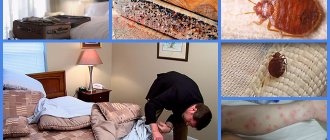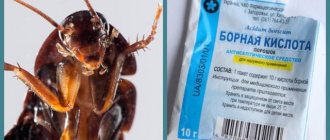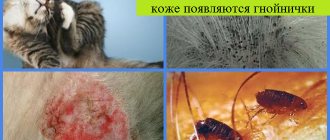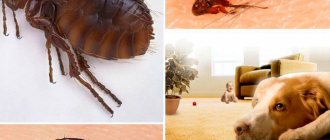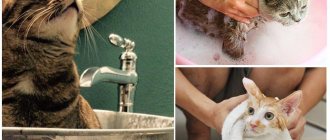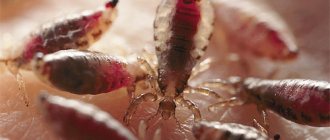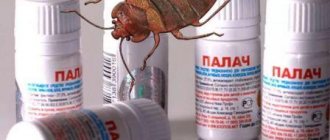What are sand fleas?
The sand flea is a very small parasitic insect, a distant relative of the common Russian cat flea. The length of the body is no more than 1-2 mm. The insect cannot fly, but it jumps beautifully: one jump is possible at a distance of up to 35 cm. The appearance of the flea is that the body is shiny and hard brown, it is impossible to crush one with your finger (see photo).
sand flea
Habitats
Sand fleas (see photo) usually live in southern tropical countries. The most common places:
- islands of Central America (Cuba, Jamaica);
- On the African continent (Trinidad, Dominican Republic, etc.);
- Southeast Asia (Thailand, Vietnam, India).
Sand fleas in Vietnam are most common in rural areas and the homes of poor people in cities. They live in such places everywhere: on the ground and in the grass, on the floor, in animal sheds, among trees and on the beach. Their victims are animals and people, including tourists.
Beach fleas in Vietnam are found mainly on uncivilized beaches, because in private and tourist establishments the owners, knowing about this problem, get rid of parasites in the sand by sifting it.
Flea bites and their consequences
Bites from male sand fleas (most often on the legs or arms) can cause the only trouble - negative sensations due to constant itching and scratching. To get rid of these symptoms, it is better to use ointments.
But a meeting between a vacationer and a female can result in more unpleasant consequences.
Sand flea bites
Interesting!
For a female flea, any warm-blooded animal, incl. and a person is an opportunity to raise his offspring in very favorable conditions and feed them well.
The fertilized female bites through the skin and attaches to a blood vessel in the upper layer of the human epidermis. She then begins to feed on blood and raise her children. Sand fleas hatch eggs under the skin, increasing in size tens of times in a few days.
After the eggs mature, the female lays them, shooting them out of the nest, and then most often dies. When the larvae hatch, they fall onto the ground or sand, where they mature for 20 days, gradually turning into an adult sand flea.
Tungiasis
The female sand flea can cause a disease called tungiasis, to which tourists have recently often been exposed when visiting tropical countries.
During the period the female stays in the human body in the subcutaneous layer (3-12 days), the tissues located around begin to become inflamed and suppuration occurs. The person begins to experience severe pain; a swelling forms at the site of the female, in the center of which is a black abscess or white abscess (as seen in the photograph). To get rid of it, you will have to contact specialists.
Treatment process and possible complications
Sand flea bites
How to treat after a sand flea bite:
- The first step is to see a doctor for help;
- If you are only concerned about itching in the bitten areas, then ointments or creams against itching are usually used (Yellow Balm cream is very popular for this purpose in Vietnam);
- If an allergic reaction occurs (fever and severe rash), antihistamine medications are prescribed, and Fenistil-gel also relieves itching;
- If inflammation is detected at the location of the female flea, then the only treatment option is to surgically open the abscess, remove the female, and disinfect the wound and apply a bandage;
- It is not recommended to treat an abscess on your own, or remove the female with a needle or knife, because the flea attaches to a blood vessel, and particles of the extracted parasite can enter the blood;
- Inflammation that occurs when an infection enters a wound often causes suppuration, which can have dire consequences in the long term, so the doctor must prescribe a course of antibiotics.
Complications and consequences that are possible with improper treatment of tungiasis:
- Deformation of the fingers (if the abscess is located on the fingers) and even amputation;
- Thrombophlebitis or elephantiasis;
- Pneumonia (pneumonia);
- Necrosis of tissue at the site of the bite.
How they bite
Unlike simple fleas, sand fleas can not only drink blood, but also crawl under the skin, which ultimately leads to serious consequences.
Males and females bite differently. If the former cling to the skin for some time and fall off after saturation, then the latter, in addition to feeding, also multiply under the skin of a person or animal. The female sand flea bites through the skin and attaches itself to a blood vessel - from that moment on, it begins to feed continuously. Within a few days, the fertilized female increases in size several times - during this time hundreds of eggs develop inside her. As a result, it becomes like a white pea.
After another couple of weeks, the eggs are pushed out of the body and remain under the skin. After this, the female tries to get out, but often cannot do this and dies in her own clutch. After maturation, the larvae fall out of the wound onto the ground and within 20 days they grow into a full-fledged adult flea.
Such flea parasitism is accompanied by acute pain and itching, and the bite site becomes inflamed and festers. Throughout the female’s stay under the skin, fluid is released from the wound.
The legs, arms, the area under the nail plate, and the abdomen are most susceptible to attacks. But this does not mean that they do not attach themselves to other places; such a parasite can be found on any part of the body.
Safety regulations
Sand flea
To reduce the risk of contact with sand fleas, you must follow these rules:
- Before traveling to southern countries, buy a protective product against sand fleas - a special repellent that protects against bites.
- Always wear shoes with socks;
- Move along the beach only in flip-flops or slippers;
- Do not sit directly on the sand;
- If there is a suspicion on the beach that sand fleas are present, then move to a sunnier place, because parasites prefer shaded places, and they are also not found in water;
- Wash your feet and examine them every evening;
- If you suspect a sand flea bite or penetration, consult a doctor.
Important!
The main rule for tourists vacationing in warm countries is not to swim or sunbathe on remote beaches not visited by people, not to walk through thickets of tall grass, etc…. otherwise sand fleas and other harmful insects will find you.
What you need to know about sand fleas in Vietnam and how to protect yourself
Holidays in warm countries can be ruined by the appearance of creepy guests - sand fleas. These insects do not live in cold climates, so the risk of getting bitten only increases during the holiday period. They are a serious problem for residents of warm countries. Flea wounds not only cause itching, redness and irritation, but are also a means of transmitting dangerous diseases.
Appearance The sand flea is very difficult to notice with the naked eye. Usually they do not exceed two millimeters, being relatives of the familiar Russian fleas. Adults are brown, brown or red in color. It is almost impossible to crush an insect with your fingers, because their body is covered with a special chitinous layer. They are quite rare on the beach, but bushes, stones, grass and trash cans are their favorite habitat. In Vietnam, they can be found on unequipped beaches and in the jungle. The latter place is often visited by tourists, as it is a favorite type of excursion on vacation. Sand flea bites usually infect animals. Insects have legs with small bristles that allow them to deftly grasp the fur.
Why is a bite dangerous? Wounds from males are not dangerous to humans. They cause small red dots that can be itchy and can also cause an allergic reaction in many people. Particularly sensitive travelers may use anti-redness ointment or allergy tablets. The bites of females are much more dangerous. This is because during a bite, an insect can lay eggs in the wound. From the outside it looks like a big boil. If things go too far, a person may develop sarcopsillosis.
What to do if you are bitten If a sand insect bite occurs, you need to go to the nearest pharmacy and purchase a special ointment for redness and an anti-allergy agent. If the wound was made by a female, you should not try to perform any manipulations yourself. In this case, you need to go to your local hospital and ask for specialist services. To prevent infection, healthcare workers may give an injection.
How to protect yourself from a sand flea bite Sand fleas live in Vietnam in any season. Therefore, it is worth having some knowledge to keep yourself and your family safe.
Precautionary measures: relax on specially equipped beaches; wild beaches should be visited in closed clothes; when going on an excursion to the jungle, you must wear special equipment; After excursions, it is mandatory to inspect the body for insect bites; use protective equipment to prevent bites; process accommodation numbers, if this is not provided by the employees of the hotel or private home.
To protect against this type of flea, you can use a regular sunscreen with a repellent. It is necessary to update its layer every time you leave the water. This will reduce the risk of bites. Any vacation should bring extremely positive memories. That is why before you go on a trip to other countries, you need to carefully study the area.
(Visited 4 times, 1 visits today)
Not just fleas
Tourists coming to Vietnam and Thailand often confuse the bites of sand fleas and other insects, especially since it is not always possible to see the culprit of the bite. Therefore, information about the existence of other similar insects, whose bites are visually indistinguishable from flea “injections”, will be useful for them:
- Midges and mosquitoes fly very quickly and leave similar bites;
- Ants - can bite a person if they accidentally crawl into clothes or are crushed by hand;
- Ticks - they stick and drink blood for quite a long time, but if they are not noticed in time, they leave bumps at the site of the bite, causing painful discomfort;
- Bedbugs are present only in the cheapest hotels, leaving bite marks on the body (usually no bumps).
Can they live in an apartment
In various regions of Russia, there are many types of fleas that can enter the premises, despite the absence of pets. The most common types are:
- Domestic fleas, which are carried by animals into an apartment, can also bite people;
Fleas - Basement bugs (bugs up to 0.5 cm in size), penetrating from the basement or entrance into the living quarters on the lower floors;
- Bedding (white), living directly in beds;
- Sand fleas in apartments are very rare and only on the Crimean Peninsula, but there they are not as dangerous as their overseas brothers.
Recommendations for tourists leaving to sunbathe in southern countries: take with you creams and ointments against harmful insects and more. Have a nice holiday!
They bite like fleas
In addition to sand fleas, in hot countries there are other insects whose bites can be confused with flea bites. The affected areas also itch, and an allergic reaction may even manifest itself, but this will be caused by completely different insects, namely:
- Ants. They often get caught under clothing by accident. If their path is blocked by an obstacle, the ant will prefer to climb over it rather than go around it, which is why sometimes one or two individuals can crawl onto a person. Mass attacks do not happen, except in cases where a person harms an anthill.
- Midges and mosquitoes. Very small and nimble insects - you may not even notice them. Usually, a person finds out that one of them has bitten only later, when itching and redness appear. Neither the first nor the second lay eggs in living creatures, therefore, apart from itching and possible allergies, they are not particularly dangerous.
- Bedbugs. These insects live in residential areas and usually do not carry any diseases, but can cause a lot of discomfort. The bites are arranged in a chain and are larger in size than flea bites.
- Ticks. The swelling from the bites of these parasites is quite large, so it is impossible not to notice the consequences.
- Beach flies. These parasites bite very painfully, and the wounds take a long time to heal and itch unbearably. In such cases, you cannot do without special antihistamines.
Despite the abundance of harmful insects, you should not postpone your trip to tropical countries. Nowadays, thousands of reviews of vacations spent in southern countries are full of complaints about bites, but if safety precautions are followed, they will not spoil your vacation, so you should prepare before the trip.
It is also worth remembering that active recreation is good for health - it not only improves the functioning of the entire body, but also reduces the likelihood of sand flea attacks.

